Your Cart is Empty

Back pain is the #1 cause of disability in the US. It disrupts millions of lives every year. It’s the most common reason for missed work days and the third most common reason for a doctor’s visit.
Young and old alike will experience back pain in their life, and it doesn’t even matter if you’re physically active or not. When that happens, an understanding of the back allows you to properly treat, manage, and relieve pain.
Are you ready to get to know your back? Let’s start.
One of the major parts of the back is called the vertebral column or commonly known as the spine. The vertebral column is a series of 33 bones called the vertebrae. Each vertebrae may be small, but together, they make up one of the most crucial structures of the human body.
Each vertebrae has 2 structures: the vertebral body and the vertebral arch.
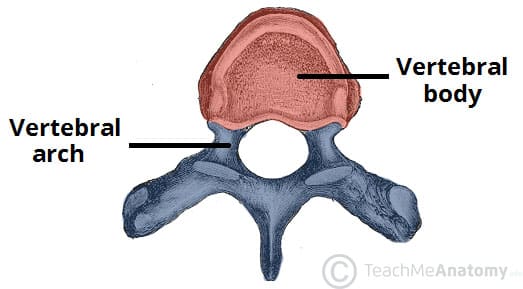
Photo from TeachMeAnatomy
Within each vertebral body is a disc that protects it called the nucleus pulposus, which is surrounded by an outer structure called the annulus fibrosus. Together, they make up the joint that connects each vertebrae.
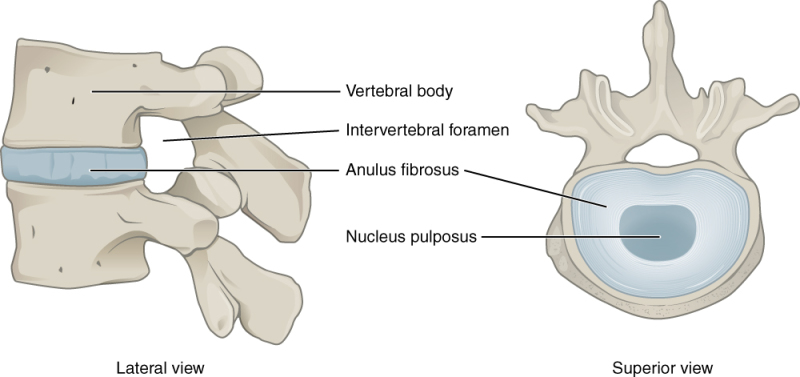
Photo from the National Center of Biotechnology Information
Now that you know what makes up each vertebrae, let’s talk about the spine as a whole. The spine is divided into five sections: cervical, thoracic, lumbar, sacral, and coccyx.
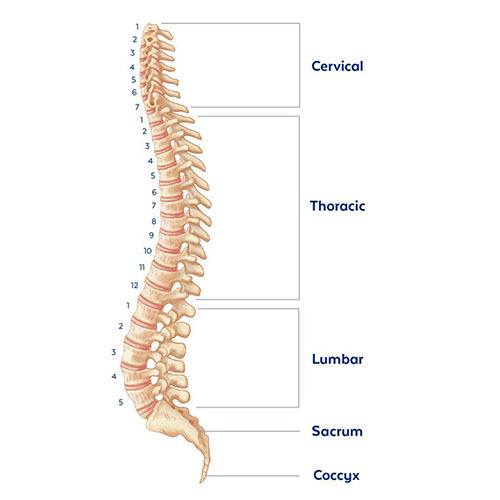
Photo from Globus Medical
Cervical Spine
The cervical spine is located directly under your skull and before your upper back. The cervical spine supports your neck and contains the C1 and C2 vertebrae and is considered as the most superior part of your spine.
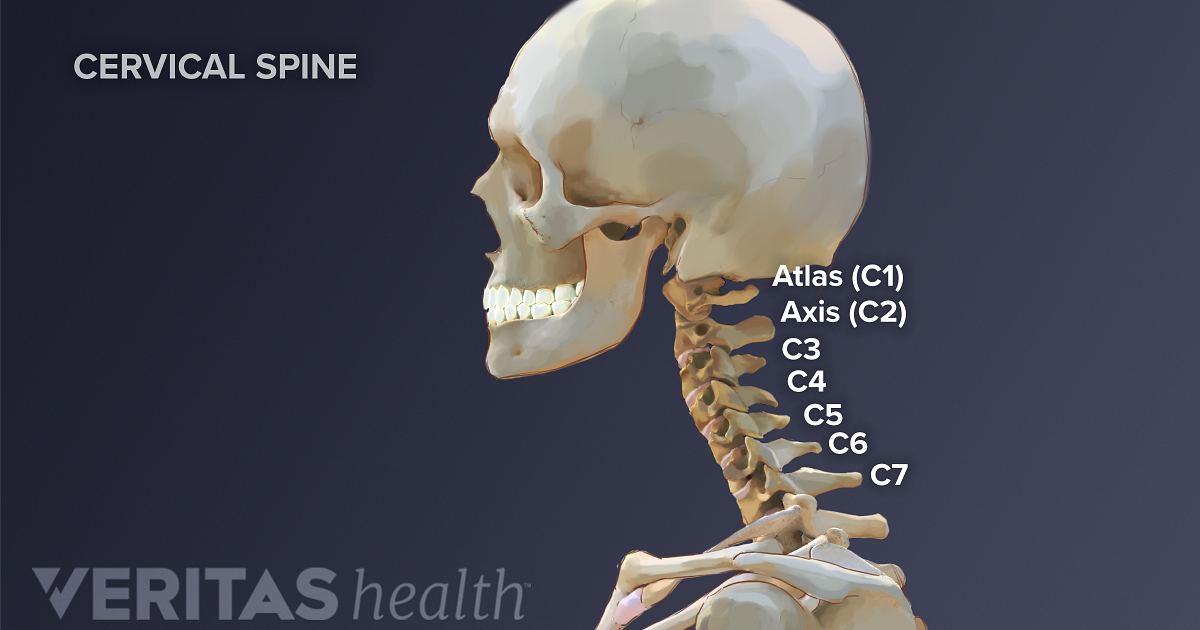
Photo from Spine Health
The C1 vertebra is called the Atlas vertebra. The Atlas supports the weight of the skull. The C2 vertebra is known as the axis. It allows the head to rotate.
Thoracic Spine
The thoracic vertebrae is regarded as your upper back. It is the longest part of the spine and is the only region that is attached to your ribcage. Your thoracic spine supports the weight of your torso and protects your lungs and heart by attaching to the rib cage.
Lumbar Vertebrae
Your lumbar spine contains the largest vertebrae in order to support the increasing weight of the body. Otherwise known as your lower back, the lumbar spine allows you to lift heavy weights.
Sacrum
The sacrum looks more bone than vertebra, but it actually is composed of a couple of smaller bones. It’s nestled between the hip bones, right below the last lumbar vertebra.
Coccyx
The coccyx is the last part of the spine which is otherwise known as your tailbone. Along with the sacrum, it is integral to daily movements such as walking, standing, and bears your weight when you’re sitting or reclining.
The spine has 4 main functions: Protect, Axis, Support, Mobility.
P for Protection
The spine protects the spinal cord which is the pathway responsible for all our bodily functions. As mentioned earlier, it also protects the lungs and other vital organs by connecting itself to the rib cage.
S for Structure Support
The spine keeps our body standing upright. It is responsible for our posture and why we aren’t melted pools of muscles and organs.
A for Axis
The spine serves as an axis for the upper body, head, and neck.
M for Mobility
The spine allows for mobility despite all its other functions. It allows you to bend, stretch, and turn your body in different directions.
Since your spine is essentially made up of bones, they too can be prone to fractures, subluxations, and dislocations.
The back has a total of 40 muscles (20 muscle pairs) which are divided into three types: superficial, intermediate, and intrinsic muscles.
As the spine supports the muscles, the muscles support the spine. It provides stability as well as mobility to the upper body and the spine.
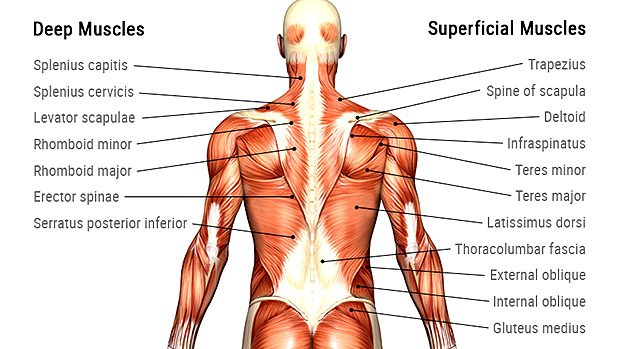
Photo from Orchard Health Clinic
Superficial Muscles
Superficial muscles are the muscles that you can see under your skin. (If you’ve overheard people working out their “traps” and “lats” at the gym, they’re talking about these muscles.) These are the muscles that make you swole and get you gains.
Your superficial muscles include:
Your superficial muscles allow you to move the upper limb
Intermediate Muscles
Intermediate muscles allow our rib cage to elevate and depress. These muscles assist in aspiration.
Intrinsic Muscles
The last type of back muscle is called the intrinsic muscles. The intrinsic muscles work to help movements of your vertebral column and control your posture.
These muscles are otherwise known as erector spinae.
Because you have one!
Your back is home to your spinal cord, keeps your posture upright, safeguards your internal organs, and bears the weight of your body. It honestly does a lot. Unlike an injury on an isolated place like your shoulder, a slip in your back can be debilitating for all of your body and your everyday activity.
Being knowledgeable about what makes up your back makes you a better guardian of it.
Watch your posture
Unless you have a condition like scoliosis, make it a point to observe proper posture. When you work a desk job, you can’t help but be in one slouched pose for at least 8 hours. Try as much as you can to stretch in frequent intervals.
Yoga is a helpful activity to help with stretching your back, improving flexibility, and improving overall posture.
Exercise with proper form
Having a stronger back allows you to lift heavier weights but an improper form can also wreak your muscles heavily. That’s why it’s important to work with a fitness professional when working out. When you do, you reap the most benefits and more.
Eat right
Not all food is created equal. Obesity increases your risk for back pain because of all the extra weight your body isn’t built to carry.
When you’re just at the right weight, you still need to watch your diet. Eat right! When you have an existing back injury, inflammatory food can make it worse.
Maintain healthy habits
The little things you do, good and bad, every single day affect your health immensely. Bad habits like smoking or not sleeping enough add up in the long run. Smoking can affect your back health. Lack of sleep can also affect your bone and muscle health.
The back is a complex network of structures that keep you strong yet mobile at the same time.
Out of all the body parts, we’ll argue that this is the one that will debilitate you the most. Back pain can keep you from performing your normal, daily functions. Luckily, most pain can be relieved at home with a massage or hot and cold therapy.
IceWraps is home to high quality gel packs you can use for hot and cold compress. With IceWraps.com, pain relief is just a click away!
 |
 |
| ICEWRAPS 12X21 OVERSIZE COLD THERAPY CLAY PACK WITH COVER | ICEWRAPS 10X14 STANDARD COLD THERAPY CLAY PACK WITH COVER |
 |

|
Comments will be approved before showing up.